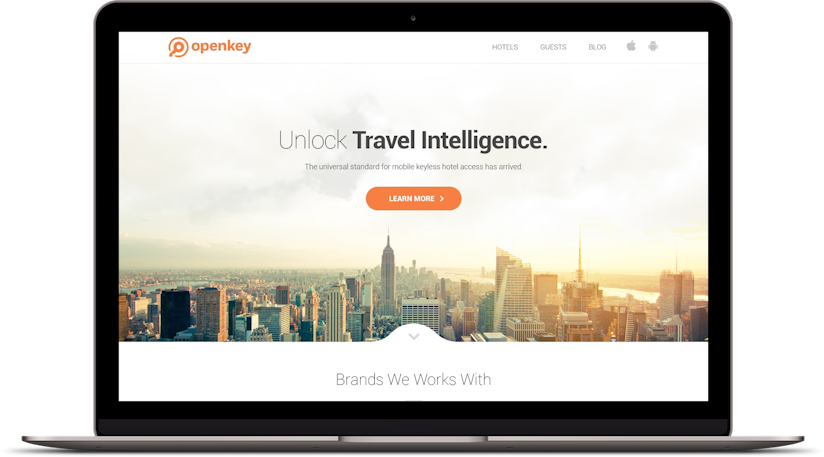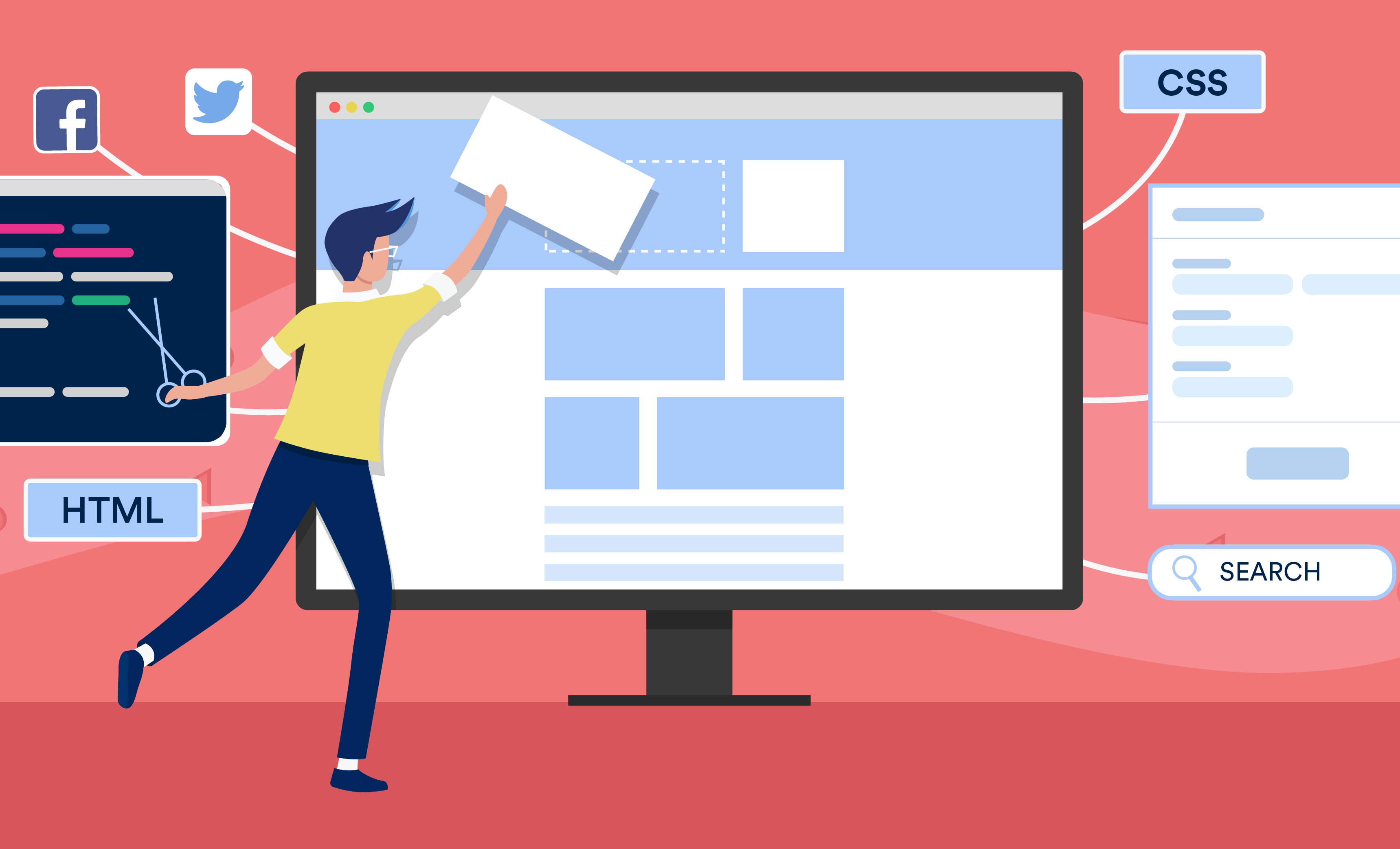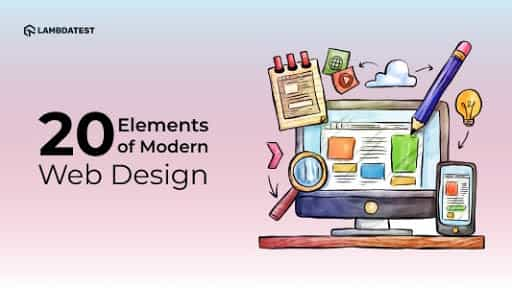All Categories
Featured
Table of Contents
- – Top Web Design Courses Online - Updated [April...
- – What Is Web Design? The Ultimate Guide To Web...
- – Webdesign Designs, Themes, Templates And ... ...
- – Learn Web Design With Online Courses, Classes...
- – Web Designer News - The Best Curated News For...
- – What Is A Web Designer? (2022 Guide) - Brains...
- – 10 Principles Of Good Web Design - Smashing ...
- – Web Design Services By Freelance Website Des...
- – Boxcar Studio - Wordpress & Drupal Web Desig...
- – Web Design Services - Verizon Small Business...
- – Web Design - The First 100 Years - Idle Word...
Top Web Design Courses Online - Updated [April 2022] - Udemy Tips and Tricks:
Quick summary Usability and the utility, not the visual style, determine the success or failure of a site. Considering that the visitor of the page is the only individual who clicks the mouse and therefore decides whatever, user-centric design has established as a standard approach for effective and profit-oriented website design - web design frederick md.
and the utility, not the visual style, identify the success or failure of a website. Since the visitor of the page is the only person who clicks the mouse and therefore decides everything, user-centric style has become a standard approach for effective and profit-oriented web design. After all, if users can't use a function, it might too not exist.
g. where the search box ought to be placed) as it has actually currently been done in a number of articles; instead we focus on the approaches which, utilized effectively, can lead to more advanced design choices and simplify the process of viewing presented details. Please discover that you may be thinking about the usability-related articles we've released prior to: Concepts Of Excellent Website Design And Efficient Web Design Standards, In order to utilize the concepts appropriately we initially require to understand how users interact with websites, how they believe and what are the standard patterns of users' habits.
What Is Web Design? The Ultimate Guide To Website Design ... Tips and Tricks:
Visitors glimpse at each new page, scan some of the text, and click the first link that captures their interest or vaguely resembles the important things they're trying to find. There are large parts of the page they do not even look at. The majority of users look for something fascinating (or beneficial) and clickable; as quickly as some appealing prospects are found, users click.
If a page provides users with premium content, they are prepared to jeopardize the material with ads and the design of the website. This is the reason not-that-well-designed websites with premium material acquire a great deal of traffic over years. Material is more crucial than the style which supports it.

Users do not check out, they scan. Notice how "hot" locations abrupt in the middle of sentences. This is typical for the scanning process. Very easy concept: If a website isn't able to fulfill users' expectations, then designer stopped working to get his job done appropriately and the company loses cash. The higher is the cognitive load and the less user-friendly is the navigation, the more ready are users to leave the site and look for options.
Webdesign Designs, Themes, Templates And ... - Dribbble Tips and Tricks:
Neither do they scan webpage in a direct style, going sequentially from one site section to another one. Instead users satisfice; they pick the very first sensible choice. As quickly as they find a link that looks like it might cause the goal, there is a really good opportunity that it will be right away clicked.
It does not matter to us if we comprehend how things work, as long as we can utilize them. If your audience is going to act like you're creating billboard, then style excellent billboards." Users wish to be able to control their web browser and depend on the constant data presentation throughout the site.
If the navigation and website architecture aren't user-friendly, the variety of concern marks grows and makes it harder for users to comprehend how the system works and how to get from point A to point B. A clear structure, moderate visual ideas and easily recognizable links can help users to find their course to their goal.
Learn Web Design With Online Courses, Classes, & Lessons Tips and Tricks:

Because users tend to check out sites according to the "F"-pattern, these three declarations would be the very first elements users will see on the page once it is packed. The style itself is easy and instinctive, to understand what the page is about the user requires to search for the answer.
Once you've achieved this, you can interact why the system works and how users can gain from it. Individuals will not utilize your website if they can't discover their method around it. 2. Don't Waste Users' Persistence, In every job when you are going to offer your visitors some service or tool, attempt to keep your user requirements very little.
First-time visitors are willing to, not filling long web types for an account they may never use in the future. Let users explore the site and discover your services without requiring them into sharing private data. It's not affordable to require users to enter an email address to check the function.
Web Designer News - The Best Curated News For Designers Tips and Tricks:
And that's what you desire your users to feel on your web site. The registration can be done in less than 30 seconds as the form has horizontal orientation, the user doesn't even require to scroll the page.
A user registration alone is enough of an obstacle to user navigation to cut down on incoming traffic. 3. Manage To Focus Users' Attention, As websites supply both static and vibrant content, some aspects of the user interface attract attention more than others do. Obviously, images are more eye-catching than the text simply as the sentences marked as vibrant are more appealing than plain text.
Focusing users' attention to particular areas of the site with a moderate usage of visual elements can help your visitors to get from point A to point B without thinking of how it really is supposed to be done. The less question marks visitors have, the they have and the more trust they can establish towards the company the site represents.
What Is A Web Designer? (2022 Guide) - Brainstation® Tips and Tricks:
4. Pursue Feature Direct exposure, Modern website design are normally criticized due to their approach of guiding users with visually appealing 1-2-3-done-steps, big buttons with visual results and so on. From the design point of view these aspects in fact aren't a bad thing. On the contrary, such as they lead the visitors through the website material in a very easy and user-friendly method.
The site has 9 primary navigation options which are noticeable at the very first glimpse. The choice of colors may be too light, though. is a basic principle of successful user interface design. It doesn't truly matter how this is accomplished. What matters is that the content is well-understood and visitors feel comfy with the method they interact with the system.
Instead a cost: just what visitors are looking for. An optimum option for reliable writing is touse short and succinct phrases (come to the point as rapidly as possible), use scannable layout (categorize the content, utilize multiple heading levels, utilize visual aspects and bulleted lists which break the circulation of uniform text blocks), use plain and unbiased language (a promotion does not need to sound like ad; give your users some sensible and objective reason why they should use your service or stay on your website)6.
10 Principles Of Good Web Design - Smashing Magazine Tips and Tricks:
Users are rarely on a site to enjoy the style; additionally, in many cases they are looking for the info despite the style - web design frederick md. Pursue simpleness instead of complexity. From the visitors' point of view, the best site style is a pure text, with no ads or additional content obstructs matching precisely the inquiry visitors used or the material they have actually been trying to find.
Finch clearly presents the information about the website and gives visitors an option of options without overcrowding them with unneeded material. 7. Do not Be Scared Of The White Area, Really it's actually hard to overestimate the significance of white space. Not just does it help to for the visitors, but it makes it possible to perceive the details presented on the screen.
Complex structures are harder to check out, scan, evaluate and work with. If you have the choice between separating 2 design segments by a visible line or by some whitespace, it's usually much better to use the whitespace solution. (Simon's Law): the much better you manage to provide users with a sense of visual hierarchy, the easier your content will be to view.
Web Design Services By Freelance Website Designers - Fiverr Tips and Tricks:
The very same conventions and guidelines ought to be applied to all elements.: do the most with the least quantity of cues and visual aspects. Four significant indicate be considered: simplicity, clearness, diversity, and emphasis. Simplicity consists of just the elements that are most important for communication. Clarity: all elements should be designed so their significance is not ambiguous.
Conventions Are Our Pals, Standard design of website components doesn't result in an uninteresting website. In reality, as they decrease the discovering curve, the need to determine how things work. It would be an use problem if all websites had different visual discussion of RSS-feeds. That's not that different from our regular life where we tend to get used to basic principles of how we organize data (folders) or do shopping (placement of products).
understand what they're getting out of a website navigation, text structure, search placement etc. A case in point from use sessions is to equate the page in Japanese (presuming your web users do not know Japanese, e. g. with Babelfish) and provide your functionality testers with a task to discover something in the page of various language.
Boxcar Studio - Wordpress & Drupal Web Design ... - Ann Arbor Tips and Tricks:
Test Early, Test Frequently, This so-called TETO-principle should be used to every web design project as usability tests typically supply into substantial problems and problems related to a given design. Test not too late, not too little and not for the incorrect reasons.
Some essential points to keep in mind: according to Steve Krug, and testing one user early in the job is much better than testing 50 near completion. Accoring to Boehm's very first law, errors are most regular throughout requirements and style activities and are the more costly the later on they are gotten rid of.
That implies that you develop something, test it, fix it and after that check it again. There might be problems which have not been found throughout the preliminary as users were almost obstructed by other problems. functionality tests. Either you'll be pointed to the problems you have or you'll be indicated the absence of major style flaws which is in both cases a helpful insight for your job.
Web Design Services - Verizon Small Business Essentials Tips and Tricks:

This holds for designers. After you have actually dealt with a website for few weeks, you can't observe it from a fresh viewpoint any longer. You know how it is developed and for that reason you know exactly how it works you have the knowledge independent testers and visitors of your site would not have.
It can be connected to other locations such as graphic style, user experience, and multimedia arts, but is more aptly seen from a technological perspective. It has become a big part of people's everyday lives. It is difficult to think of the Web without animated graphics, various designs of typography, background, videos and music.

Throughout 1991 to 1993 the World Wide Web was born. Text-only pages could be viewed utilizing a simple line-mode internet browser. There had been no integrated technique to graphic style aspects such as images or sounds.
Web Design - The First 100 Years - Idle Words Tips and Tricks:
The W3C was developed in October 1994 to "lead the Internet to its complete potential by developing common procedures that promote its development and ensure its interoperability." This prevented any one business from monopolizing a propriety internet browser and shows language, which could have changed the impact of the World Wide Web as a whole.
As this has actually taken place the innovation of the web has also moved on. There have also been considerable changes in the method people utilize and access the web, and this has altered how websites are developed. Since the end of the browsers wars [] brand-new web browsers have actually been launched. A lot of these are open source implying that they tend to have faster advancement and are more supportive of new requirements.
Learn more about Lovell Media Group LLC or TrainACETable of Contents
- – Top Web Design Courses Online - Updated [April...
- – What Is Web Design? The Ultimate Guide To Web...
- – Webdesign Designs, Themes, Templates And ... ...
- – Learn Web Design With Online Courses, Classes...
- – Web Designer News - The Best Curated News For...
- – What Is A Web Designer? (2022 Guide) - Brains...
- – 10 Principles Of Good Web Design - Smashing ...
- – Web Design Services By Freelance Website Des...
- – Boxcar Studio - Wordpress & Drupal Web Desig...
- – Web Design Services - Verizon Small Business...
- – Web Design - The First 100 Years - Idle Word...
Latest Posts
The Leader In Website Design – Squarespace Tips and Tricks:
Minneapolis Web Design - 100+ Five Star Reviews - Seo ... Tips and Tricks:
Learning Web Design: A Beginner's Guide To Html, Css ... Tips and Tricks:
More
Latest Posts
The Leader In Website Design – Squarespace Tips and Tricks:
Minneapolis Web Design - 100+ Five Star Reviews - Seo ... Tips and Tricks:
Learning Web Design: A Beginner's Guide To Html, Css ... Tips and Tricks: